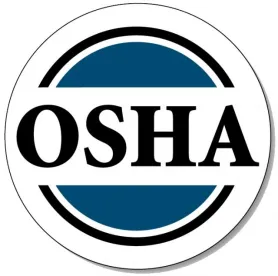The U.S. Occupational Safety and Health Administration (“OSHA”) has issued a new rule, effective August 10, 2016, that requires certain employers to electronically report information related to workplace injuries and illnesses.1 Although employers are already required to maintain such information, it is typically revealed to OSHA only during inspections or surveys. Beginning in 2017, however, nearly 750,000 employers at approximately 1.5 million establishments will be required to submit such information to OSHA annually.2 OSHA will then publish the information online.
Electronic Submission Requirements
Establishments with 250 or more employees that are required to retain OSHA injury and illness records must also electronically submit the information that they record in OSHA Forms 300 (Log of Work-Related Injury and Illnesses), 300A (Summary of Work-Related Injuries and Illnesses) and 301 (Injury and Illness Incident Report). Information recorded in the 2016 Form 300A must be submitted by July 1, 2017. Information recorded in 2017 for forms 300, 300A and 301 must be submitted by July 1, 2018. Starting in 2019, the information must be submitted by March 2 annually.
Establishments with 20 to 249 employees in designated high-risk industries3—such as agriculture, construction and manufacturing, but also grocery and department stores—must only electronically submit information recorded in OSHA Form 300A. Establishments in this category must submit information in their 2016 Form 300A by July 1, 2017, and in their 2017 Form 300A by July 1, 2018. Beginning in 2019, and for every year thereafter, the information must be submitted by March 2.
All such information submitted by the employers referenced above will be placed into a comprehensive database to allow OSHA to effectively and timely identify workplaces where employees are at the greatest risk. This database may also be accessed and used by employers, researchers and the general public to identify workplace hazards and industries where hazards are most prevalent.
Anti-Retaliation Provision
OSHA’s new rule prohibits retaliation against employees for reporting work-related injuries and illnesses. The rule also requires that employers inform their employees of their right to report work-related injuries and illnesses free of any manner of retaliation or discrimination.4 Although Section 11(c) of the Occupational Safety and Health Act (the “Act”) already provides anti-retaliation protection for employees who report a fatality, injury or illness, OSHA could not act under that section unless an employee first filed a complaint with OSHA. Under the new rule, OSHA will now have the authority to issue citations for retaliation even if the employee did not file a complaint. This provision became effective August 10, 2016, but OSHA has delayed its enforcement until November 1, 2016, to conduct additional outreach and provide educational materials to employers.
In light of concerns that this provision will chill employers’ reasonable discipline of employees who violate safety rules, OSHA provides that the rule does not prohibit employers from disciplining an employee who violates legitimate safety rules, even if the employee’s violation led to injury or illness and that employee reported such injury or illness. Even with this safe harbor, employers should expect to see increased enforcement actions by OSHA in the upcoming year.
Heightened Scrutiny of Post-Injury Testing
OSHA’s new rule codifies the previously implicit requirement that an employer’s reporting procedure be reasonable and not deter employees from reporting. Specifically, the final rule requires that employers establish “a reasonable procedure for employees to report work-related injuries and illnesses promptly and accurately.”5 Although the rule itself does not explicitly address post-accident drug and alcohol testing policies, OSHA’s commentary6 to the rule states that “blanket post-injury drug testing policies deter proper reporting” and suggests that such policies will be reviewed more carefully by the agency:
Drug testing policies should limit post-incident testing to situations in which employee drug use is likely to have contributed to the incident, and for which the drug test can accurately identify impairment caused by drug use. For example, it would likely not be reasonable to drug test an employee who reports a bee sting, a repetitive strain injury, or an injury caused by a lack of machine guarding or a machine or tool malfunction.7
OSHA clarifies that “[e]mployees need not specifically suspect drug use before testing, but there should be a reasonable possibility that drug use by the reporting employee was a contributing factor to the reported injury or illness in order for an employer to require drug testing.”8
1. See 29 C.F.R. 1904.41.
2. “An establishment is a single physical location where business is conducted or where services or industrial operations are performed. For activities where employees do not work at a single physical location, such as construction; transportation; communications, electric, gas and sanitary services; and similar operations, the establishment is represented by main or branch offices, terminals, stations, etc., that either supervise such activities or are the base from which personnel carry out these activities.” 29 C.F.R. § 1904.46.
3. See the following link for a complete list of industries for which establishments with 20 to 249 employees must submit Form 300A data to OSHA: https://www.osha.gov/recordkeeping/NAICScodesforelectronicsubmission.pdf.
4. See 29 C.F.R. § 1904.35(b)(1)(iii)(A)-(B).
5. See 29 C.F.R. § 1904.35(b)(1)(i).
6. “Improve Tracking of Workplace Injuries and Illnesses,” 81 Fed. Reg. 29,624, 29,673 (May 12, 2016) (codified at C.F.R. pts. 1904 and 1902).
7. Id.
8. Id.



 />i
/>i

